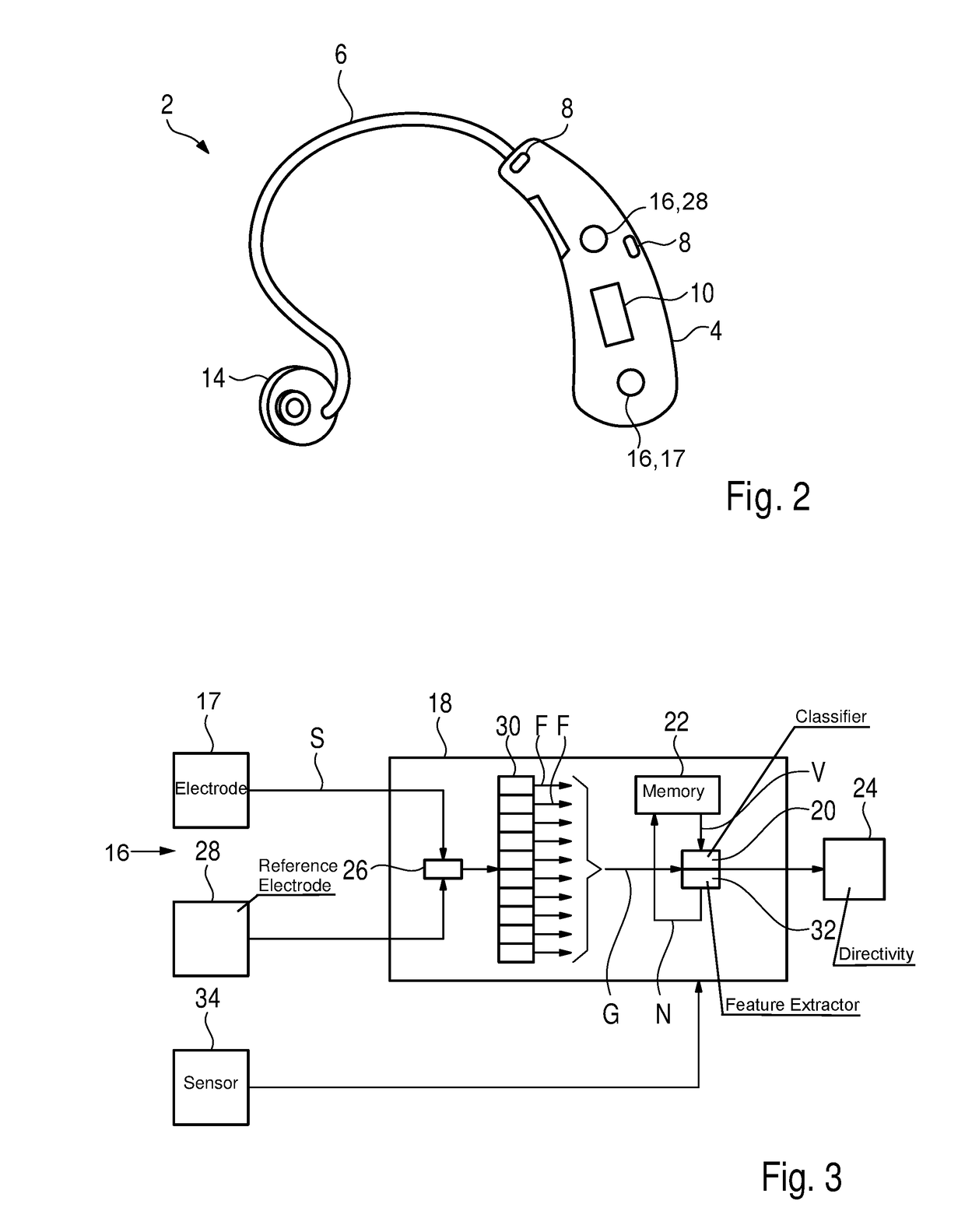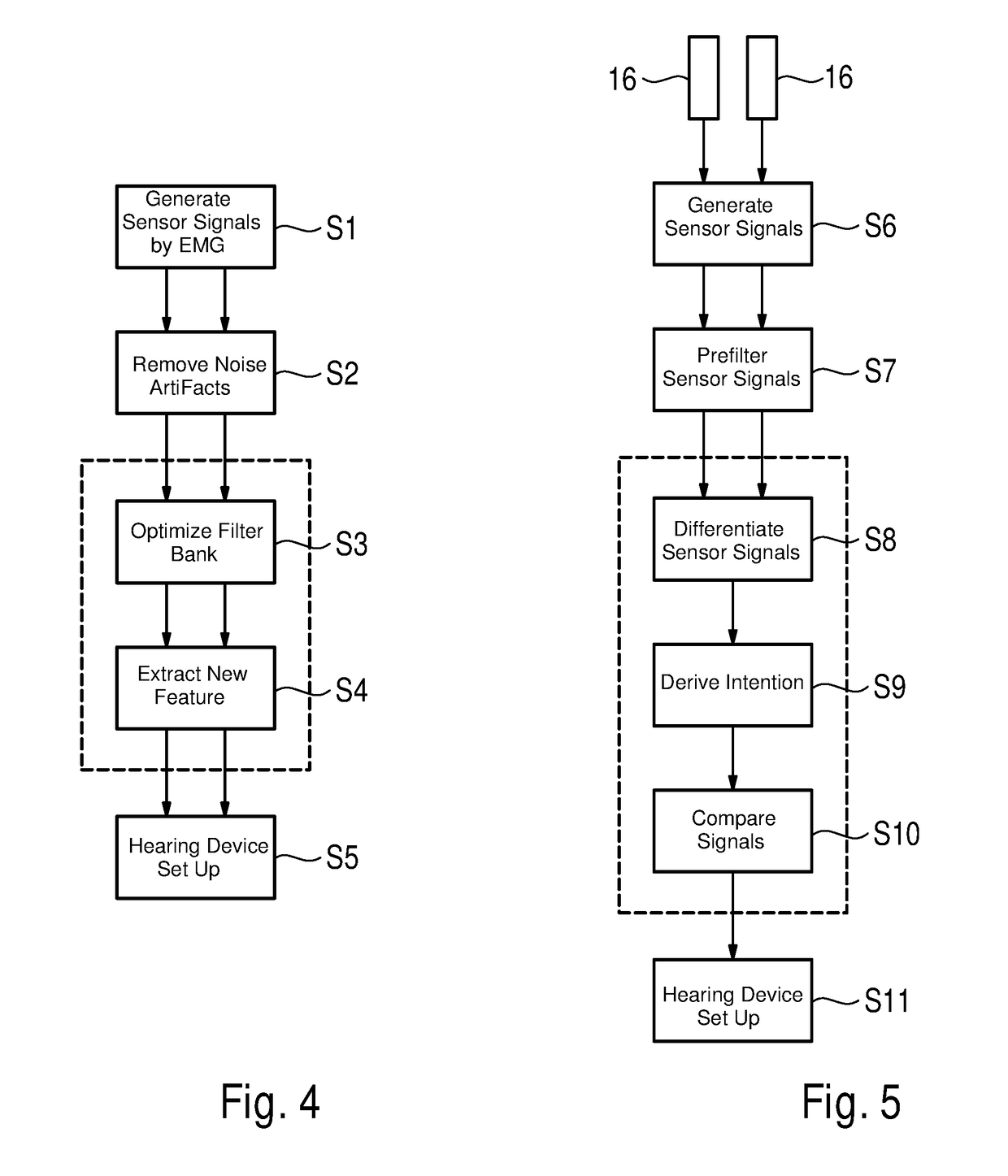Method for operating a hearing device and hearing device
a hearing device and hearing technology, applied in the field of operation of hearing devices and hearing devices, can solve the problems of greatly underdeveloped orientation activity in humans, and achieve the effects of reducing the size of the electrode array, ensuring the suitability of the hearing device and the method for everyday use, and ensuring the accuracy of measurement of muscle activity
- Summary
- Abstract
- Description
- Claims
- Application Information
AI Technical Summary
Benefits of technology
Problems solved by technology
Method used
Image
Examples
Embodiment Construction
[0091]Referring now to the figures of the drawings in detail and first, particularly to FIG. 1 thereof, there is shown a hearing device 2, which is worn behind an ear 0 of a user (not otherwise shown). The hearing device 2 is shown in more detail in FIG. 2. The hearing device 2 here is a BTE hearing device, with a housing 4 worn behind the ear 0, from which a sound tube 6 extends into the ear canal. The hearing device 2 also has a number of microphones 8 that record sound signals from the user's environment. These sound signals are then modified, and in particular amplified, by a control unit 10, and are then output via a receiver 12. From the receiver 12, the modified sound signals then pass through the sound tube 6 into the ear 0. For the secure holding of the sound tube 6, an earpiece 14, which is inserted into the ear canal, is attached to the end of the tube.
[0092]The hearing device 2 is operated by a method in which electromyography (EMG for short) is carried out, muscle activ...
PUM
 Login to View More
Login to View More Abstract
Description
Claims
Application Information
 Login to View More
Login to View More - R&D
- Intellectual Property
- Life Sciences
- Materials
- Tech Scout
- Unparalleled Data Quality
- Higher Quality Content
- 60% Fewer Hallucinations
Browse by: Latest US Patents, China's latest patents, Technical Efficacy Thesaurus, Application Domain, Technology Topic, Popular Technical Reports.
© 2025 PatSnap. All rights reserved.Legal|Privacy policy|Modern Slavery Act Transparency Statement|Sitemap|About US| Contact US: help@patsnap.com



